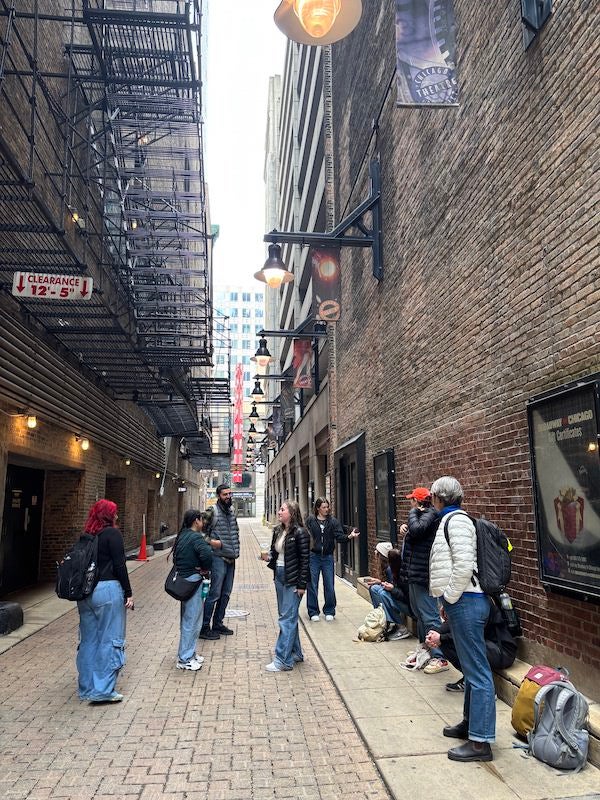Throughout April, faculty, staff and students are sharing what research and creative activity at Boise State means to them.
Jillian Moroney is a clinical associate professor in the Urban Studies and Community Development Program. Moroney’s areas of research and expertise include social assessment and stakeholder engagement regarding natural resource related topics including bioenergy, forestry, irrigation and farmland.
She works on several multi-disciplinary teams examining how communities view and use their natural resources, as well as leading classes such as the Urban Studies Field School. In this course, students gain real-world experience exploring and assisting in urban planning opportunities, such as the 2023 field school in Star, Idaho.
Q and A
Q: What is your favorite memory related to research or creative activity at Boise State?
A: “Absolutely, hands down, taking students out in the field to illustrate concepts we’ve discussed in class. This can be in Boise or beyond. We went to Chicago with the Urban Field School again this year! A highlight from the trip was standing in a gritty alley, and seeing students light up. We had met with Chicago Department of Transportation the previous day and heard about their People Alleys initiative and how they approach alley redesign. Every student stepped into the alley and had a lightbulb moment of things we had been speaking about in class and conference rooms, and they were able to identify them in what might seem like an unremarkable space to the untrained eye.”

Q: What motivates you to explore new ideas or create something original?
A: “The excitement and learning that come from creatively exploring spaces motivate me to continue this work, even though it requires more effort than simply assigning a quiz or paper. Teaching in an interdisciplinary program as well as teaching courses like UF 100 with students from wide-ranging majors—makes it essential to help students examine issues through their unique lenses of experience and study. When they have opportunities to apply their expertise and interests, the result is deeper engagement, more creative thinking, and a greater sense of ownership from everyone involved.”
Q: How do you think research and creative activity contribute to society?
A: “I think it empowers students to look at things in new ways and challenge the status quo. It allows them to understand why things are the way they are, but also realize that they can be more.”
Q: What do you wish more people knew about your research or creative activity?
A: “Each experience outside of the classroom is altering to the way students think about and experience space. They will never again walk through a city, a district, or a park, without noticing something we’ve talked about in class or ask questions about why it is designed the way it is.”
Q: Research and Creative Activity are impossible in a vacuum. Is there anyone you would like to thank for supporting, mentoring, inspiring, or otherwise shaping your work?
A: “Dr. Krista Paulsen! She is an amazing mentor, teacher, researcher and friend. Any time I have a new idea that I am not sure will work, she approaches my questions with an attitude of ‘let’s find a way to make it work.’ My gratitude to her is endless.”

Q: What does Research and Creative Activity at Boise State mean to you?
A: “Creative activity at Boise State means connecting students to the community, letting them invest in, and learn from, the places they live, work, and play. Inspiring students to imagine cities and communities that are inclusive, equitable, efficient, and beautiful. It means making these opportunities available throughout a student’s educational journey, from their first semester to their capstone course and beyond.”
Q: What else would you like to share this Research and Creative Activity Month?
A: “The work I do is designed to facilitate learning in students, but I learn so much from them. When I have the opportunity to work with a diverse group of students who bring the knowledge from their majors, their lived experiences, and their personal tastes to a project, the sum of what we create together is so far beyond what I plan and hope for. It is a privilege and honor to work with my students.”
